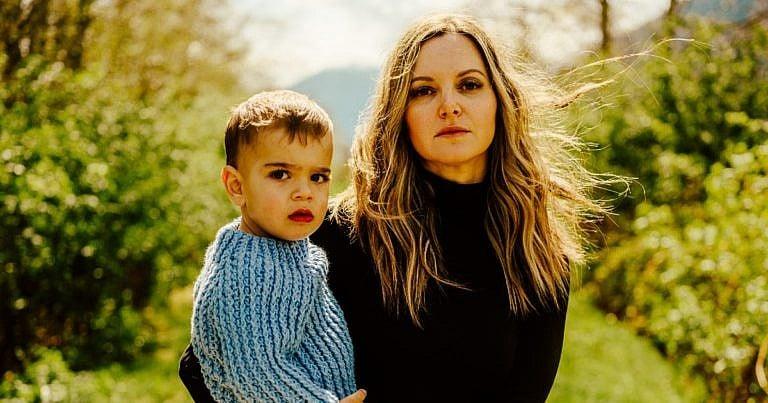I had to go back to work. Finding childcare for my son in B.C. was a nightmare
“We’ve had to pull money from our retirement savings to pay for childcare”

Share

In 2015, my husband and I moved from Ottawa to Vancouver, where he’d landed his dream job with the federal government. We loved the weather and the mountains and ocean, and we wanted to raise our future kids in B.C. I got a job at Immigration, Refugees and Citizenship Canada, and about a year after we moved, our first child was born and I went on maternity leave.
I managed to get my son into a home daycare when he was about a year old. We were paying $1,850 a month—it was expensive, but we managed to make it work thanks to savings we had from Ottawa, where the cost of living is much cheaper than in Vancouver. With my son in daycare, I was able to return to work after my maternity leave ended.
In August of 2019, my husband was transferred to Squamish, a small town north of Vancouver. I was working remotely for the government while doing public relations consulting on the side, so I didn’t have to find a new job once we moved. We found a preschool for my then-three-year-old son close to our new home, which cost us $1,150 a month. We were one of the lucky ones: I heard from other preschool parents and through Facebook groups that there were long wait lists and few daycare spots in Squamish.
During the pandemic, my husband and I decided to have another baby. The day I got a positive pregnancy test, I requested a list of every daycare in Squamish from a local community services group. I received a list with around 20 daycares, including home daycares and registered ones. I put my son—who I didn’t even know was a son at the time—on every single wait list he was eligible for. Once I gave birth in March of 2021, I sent emails to make sure all the daycares I had approached had his updated name and date of birth. We wanted to put him into daycare when he turned one, so I could return to work. Every few months, I would call and email these daycares for an update, but they wouldn’t tell me how long their wait lists were or when I could expect my son to get a spot. We even offered one daycare $10,000—a year’s worth of fees up front—to secure a place. They told me they didn’t have spots for kids my son’s age.

Once my maternity leave ended, I thought my youngest would go into full-time care and I would go back to work. That never happened. We couldn’t afford to live in Squamish on one salary, so in March of 2022, I took an unpaid leave of absence and worked on growing my public relations agency, Coldwater Communications. It was definitely a financial risk, with a mortgage and two kids, but I didn’t have a choice. I scoured Facebook groups to find babysitters and part-time nannies. For the next nine months, I had a chaotic and unpredictable childcare schedule. One part-time nanny would watch my son at home for three hours in the morning. When she left, I would put him down for a nap, then squeeze in another hour or two of work. After he woke up, a second nanny would watch him for another hour or two in the afternoon. When she couldn’t come in, I would walk him to a third nanny’s house for a nap, set up his crib, and then come back to pick him up. We were spending roughly $1,200 a month on childcare at that point.
It was a lot to juggle: I had to pay three different caregivers on time and keep track of their changing schedules, vacations and illnesses. If they needed time off, I had to find a replacement: hiring a new nanny required an extensive interview, background check, references and onboarding that was stressful and time-consuming. I couldn’t plan personal events or business meetings more than a few weeks in advance in case I didn’t have childcare. In between naps, drop-offs and pick-ups, I could only work around 20 hours a week.
In November of 2022, one of our part-time nannies quit, and I had to scramble to find her replacement. We found a family living outside our neighbourhood who we could share a nanny with—the nanny comes to their house and watches both kids, and we split her fees. I drop off my two-year-old to their house on Mondays, Wednesdays and Fridays and he’s there from 8 a.m. to 4 p.m. For the days he isn’t there, another caregiver watches him for three hours in the morning at my home. Since January, we’ve been spending around $2,200 a month on childcare alone. It’s not financially sustainable: outside our mortgage, childcare is our biggest cost. We’ve had to pull money from our retirement savings to pay for it.
There’s an end in sight: in September, my son will start full-time daycare at the same preschool my older son attends. Our costs will drop to $790 a month, because of the Child Care Fee Reduction Initiative—a government program that subsidizes childcare costs for parents. If this hadn’t worked out, we probably would have had to move and my husband would have lost his job. Having another baby is completely off the table, in part because of the childcare crunch.
Parents have to either claw for a daycare spot or uproot their lives because they can’t afford alternatives. These aren’t viable solutions. While there’s talk of building a nationally subsidized childcare system, I wonder if it will increase the number of daycare spots available. Affordable childcare is only useful as long as you can actually use it.
—As told to Adrienne Matei